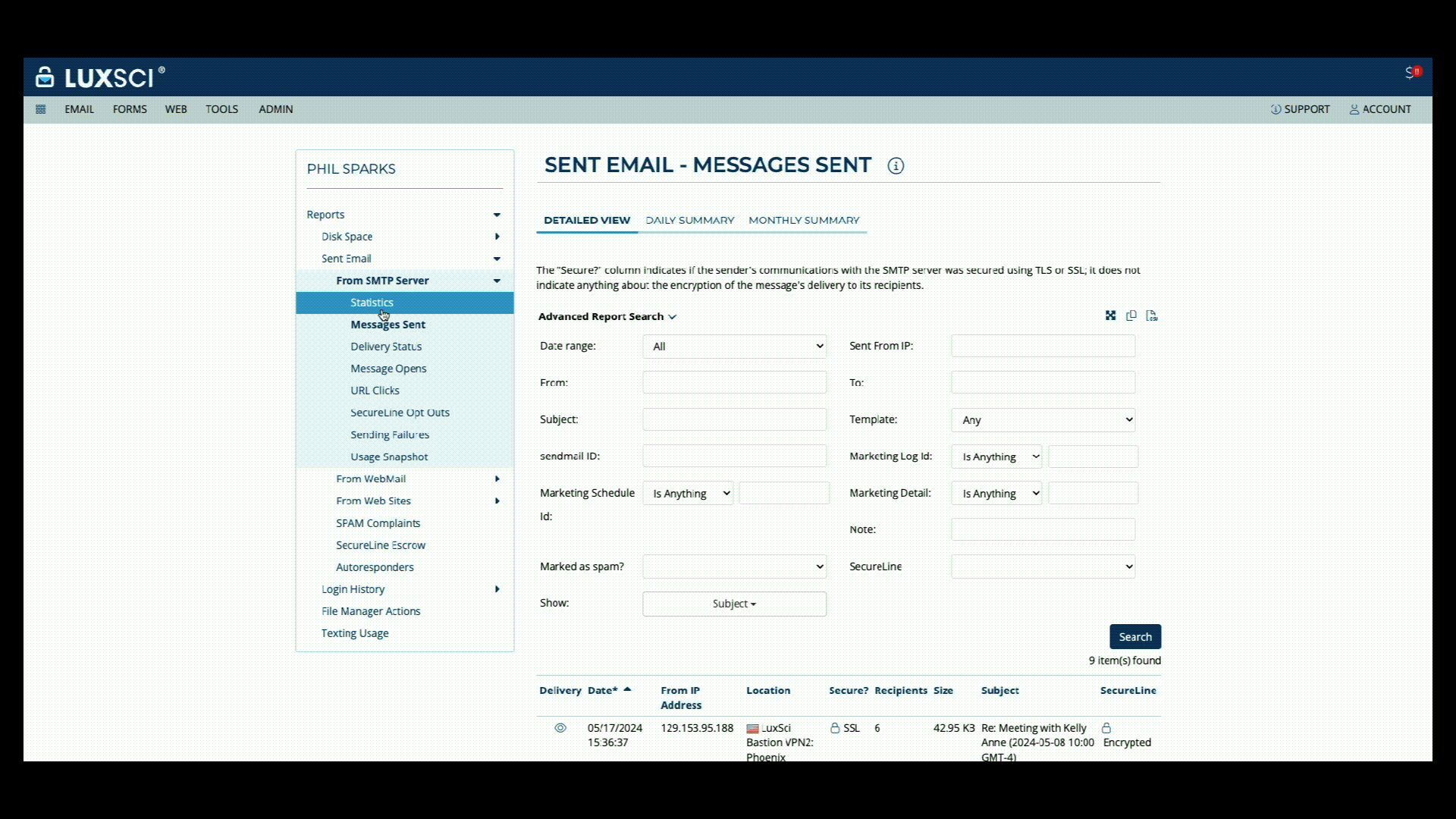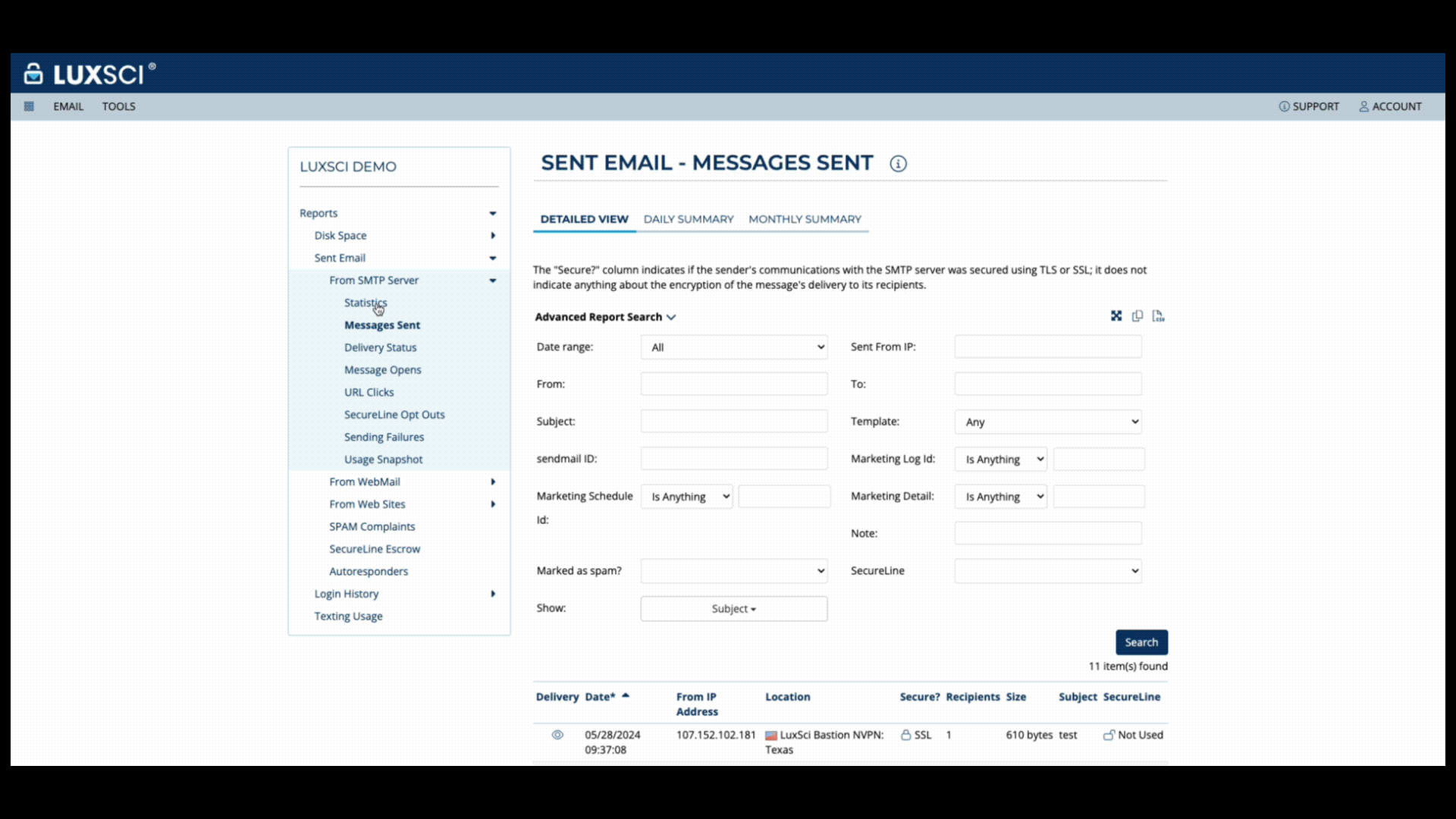Choosing the right HIPAA-compliant email vendor is crucial for protecting patient data and ensuring compliance with healthcare regulations, including verifying HIPAA compliance and security features, evaluating ease of use and integration capabilities, assessing deliverability and performance, and understanding pricing and scalability. You should also evaluate a vendor’s customer support and company reputation.
The Health Insurance Portability and Accountability Act (HIPAA) details strict guidelines for securing sensitive patient data, including Protected Health Information (PHI). As a result, healthcare providers, payers, and suppliers must use a HIPAA-compliant email provider to abide by regulations designed to safeguard PHI.
With this in mind, this post evaluates two of today’s most popular HIPAA-compliant email providers on the market: LuxSci and Paubox. We’ll compare the two HIPAA-compliant offerings on several criteria, helping you to decide which email provider best fits the needs of your organization.
LuxSci vs. Paubox: Evaluation Criteria
We will evaluate LuxSci vs. Paubox on the following criteria:
- Data security and Compliance: how well each email provider safeguards PHI as per HIPAA’s requirements
- Performance and Scalability: the platform’s ability to conduct bulk email marketing campaigns, and scale them as a company’s engagement efforts grow.
- Infrastructure: if it provides the necessary technical infrastructure, processes and controls to both protect sensitive patient data and support high-volume email marketing campaigns.
- Marketing Capabilities: if the platform provides tools for optimizing and refining your communication strategies.
- Ease of Use: how steep the learning curve is for each platform.
- Other HIPAA-Compliant Products: if the email provider offers complementary features that will aid your patient engagement efforts.
Now that we’ve explained the parameters by which we’ll be comparing the HIPAA compliant email providers, let’s see how LuxSci and Paubox stack up against each other.
LuxSci vs. Paubox: How They Compare
Data Security and Compliance
Both LuxSci and Paubox perform admirably here, with both being fully HIPAA-compliant email providers, offering automated encryption that allows you to include PHI in email communications straight away. Both providers secure email data both in transit and at rest.
Additionally, both are HITRUST certified, which further demonstrates a strong commitment to data privacy and security.
When compared to Paubox, LuxSci has the edge here because it has more comprehensive encryption options. This includes highly flexible encryption: automatically setting the ideal level of security and encryption needs based on the email content, recipient and business process.
Performance and Scalability
While both email providers deliver proven solutions and enable healthcare companies to scale their email marketing campaigns accordingly, LuxSci is the better option for high-volume email marketing campaigns, including bulk sending of hundreds of thousands to millions of emails per month. This is due to the fact that LuxSci specializes in assisting large healthcare organizations with executing high volume email marketing campaigns, including companies like Athenahealth, 1800 Contacts, Eurofins, and Rotech medical equipment. Consequently, LuxSci offers enterprise-grade scalability and has developed robust solutions capable of the high throughput required for enterprise-level patient and customer engagement efforts.
Infrastructure
Additionally, when it comes to other aspects related to infrastructure, LuxSci demonstrates an advantage. Firstly, they offer secure email hosting, while Paubox does not. Additionally, though Paubox can provide some dedicated infrastructure, e.g., single-tenancy, options, as well as high availability and disaster recovery, their capabilities are not as comprehensive as LuxSci.
Marketing capabilities
Both email delivery platforms possess useful marketing tools, enabling more effective HIPAA-compliant email marketing. This includes automation for streamlining email marketing campaigns and, customization options, so your messages are both more compelling and align with your company’s branding.
LuxSci, however, offers more comprehensive reporting capabilities than Paubox, including real-time monitoring, detailed performance metrics (e.g., deliverability, open and click-through rates, bounced emails, spam complaints, and recipient domain reporting), as well as granular segmentation options.
Ease of use
Paubox has the edge here, being the easier of the two HIPAA-compliant email providers to deploy and for staff to get to ramp up on. Suited for more complex and sophisticated environments, LuxSci offsets this with exemplary customer support honed from decades of facilitating organizations’ HIPAA-compliant email marketing campaigns – especially for this on a large scale.
Other HIPAA-compliant Products
Lastly, when it comes to complementary features, both LuxSci and Paubox offer secure texting functionality, allowing healthcare companies to cater to their patients and customers who prefer to communicate via SMS. And while both email providers feature secure forms for HIPAA-compliant data collection, LuxSci’s forms are more advanced, capable of handling more complex workflows, including multi-step data collection, and providing better customization options.
Additionally, LuxSci offers secure file sharing, encrypting files at rest and in transit, allowing for even more granular access controls, and ensuring only those within your company who must handle PHI have the appropriate access permissions. This is yet another safeguard against the exposure of PHI, whether accidentally, through identity theft (e.g., session-hijacking by a cybercriminal), or even corporate espionage.
Get Your Copy of LuxSci’s Vendor Comparison Guide
While this post focuses on comparing LuxSci and Paubox, we have created a complete Vendor Comparison Guide, which compares 12 email providers and is packed full of essential information on HIPAA-compliant communication and how to choose the best healthcare email solution for your organization.
You can grab your copy here, and don’t hesitate to contact us to explore your options for HIPAA-compliant email further.











